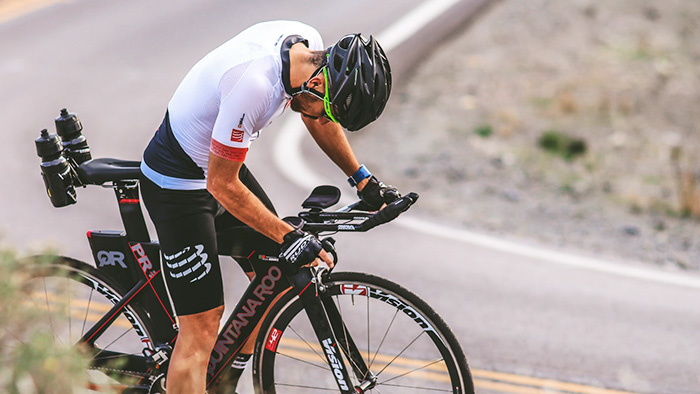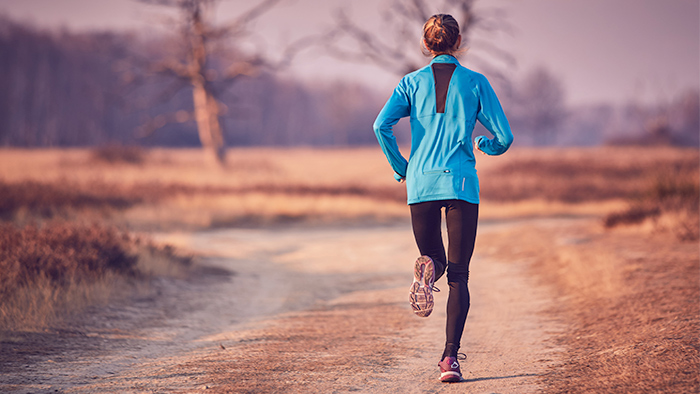Your race is approaching. You’ve done the training, but what can you do to optimize your speed to gain an advantage over the competition on race day? The following five tips are relatively inexpensive to implement and can make a big impact on how fast you go with the fitness you already have.
Tip #1: Tire Selection
Tubes and tires account for approximately 10% of the resistance a bicycle has to overcome to travel forwards. Professional triathlete Andy Potts, for example, is infamous for racing the 2015 IRONMAN World Championships in Kona with tubes and tires that cost him over seven minutes on the bike course.
The key is to find tires that minimize rolling resistance, which is measured in watts — check out Bicycle Rolling Resistance for the latest reviews. Note: while many athletes are concerned with flat protection, modern-day race tires that are inflated to the correct tire pressure are fast and extremely puncture resistant.
Potential Savings: 6-10 watts (20-40 seconds over 25 miles)
Tip #2: Tire Pressure
Tires absorb shock from road vibrations, so getting your tire pressure correct will improve the comfort of your ride and allow your bike to roll faster. There are three main things you need to consider when choosing the right tire pressure:
1. Tire Width
Tire width is listed on the sidewall of the tire. Let’s use the example of a common tire size 700×25 mm. “25 mm” is the width of the tire while “700mm” designates the circumference of the tire. The rule of thumb is usually that a wider tire can run lower tire pressure because the contact patch with the ground is increased (e.g., a 25 mm tire needs lower tire pressure than a 23 mm tire). If you can, use a caliper to measure the width of the tire once it’s mounted on your wheel. The width of the rim of your wheel drastically affects the width of the tire once it is mounted. If you are using a newer race wheel with wider rims, a tire that lists “25 mm” on the sidewall might actually measure 27 or 28 mm once it is mounted and inflated.
2. Total Weight of Rider and Bike
A heavier bike and rider deflects the casing of the tire more and thus calls for a higher tire pressure than someone who is lighter riding the exact same set-up. However, tire width is still a variable to be addressed. A 200 lb rider using 32 mm cyclocross tires, for example, might require lower tire pressure than a 140 lb rider on 23 mm tires. The calculators below will help you optimize for your tire width, weight, and road surface.
3. Road Surface Quality
A bumpy road causes a bike tire to bounce up and down. Every time it does this, it loses contact with the ground for a brief period of time and the force you apply to the pedals is lost. The goal is to keep the tire in contact with the road at all times, and lowering the tire pressure on a bumpy road will help with this. The smoother the road, the higher the tire pressure you can use. The rougher the road, the lower the tire pressure you should use. Be sure not to lower it too much or you’ll risk getting a pinch flat.
Here are some good online calculators you can use to help set the correct tire pressure.
Silca Professional Pressure Calculator
Tubeless Tire Pressure Recommendations
Potential Savings: 6-10 watts (20-40 seconds over 25 miles)
Tip #3: Clean and Lube Your Chain
The chain drives the bike when you apply pressure to the pedals. A dirty chain will cost you time over a clean and well-lubed one.
The type of lube you use can make a big difference. A fast, wax-based lubricant applied to a clean bike chain can be 3-5 watts faster than a low-cost, poor-performing, wet lube. Companies like Silca and Ceramic Speed make high-quality lubricants that are pricey but come with huge time savings.
Potential Savings: 2-5 watts (10-15 seconds over 25 miles)
Tip #4: Posture and Position While Riding
A good bike fit is extremely important. However, many people don’t realize that you can do a lot with your body on the bike to make it faster without changing your fit.
The most basic rule is to get lower when you are going faster. As speed increases, like when you’re riding downhill, drag increases. Even while staying in your aero bars, you can lower your head and draw your shoulders together to make a smaller hole in the wind.
Don’t forget this rule when you’re eating and drinking. Sit up and eat while riding up a hill and when your speed is lower. The same is true for stretching. Try to only stretch when you are coasting into a turn or riding uphill, not while going downhill, with a tailwind, and at high speeds.
Potential Savings: 10-20 watts (40-80 seconds over 25 miles)
Tip #5: Transitions and Bike Handling Skills
Transitions are the fourth discipline of any triathlon. The clock is ticking from the moment you start the race, so practicing your transitions can net you some free speed without having to gain any fitness.
You don’t need to sprint through the transition area to see a decrease in your transition times. Your goal should be to move smoothly and methodically, completing each task in a prompt and direct manner. Practice this at home so that the motion of clipping and unclipping your helmet, putting your socks and shoes on, grabbing your nutrition and race belt, and any other activities are automatic to you on race day. This will help tremendously when you are tired and fatigued from the swim and bike.
Another tip is to take some time the day before your race to walk the swim exit to your transition spot, your transition spot to bike mount, bike dismount back to your transition spot, and finally your transition spot to the run exit. Once again, this will ensure that you know where to go on race day when the transition area is crowded and things are happening quickly.
Bike-handling skills also fall into this category, as there is no additional fitness required to be good at bike handling. Riding the trainer is a great training tool and, of course, much safer than riding outdoors, but make sure you know how to corner a bicycle and control your speed on race day.
Potential Savings: 5-15 watts (15-65 seconds over 25 miles)
Summary
Each of these tips have a significant impact on speed by themselves. If you incorporate all of them before your next competition, you will see their compounding benefits. You spend so much time training and preparing for your big race — do yourself a favor and use these tips to go as fast as possible on race day!
Total Potential Savings: 30-60 watts (2:00-4:00 minutes over 25 miles)










